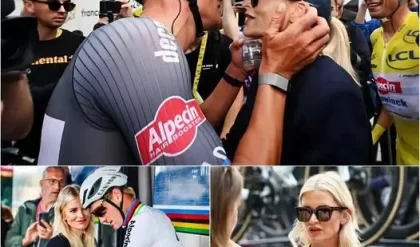In 2024, Kyle Larson set out to achieve a rare motorsports feat: the “Memorial Day Double,” which means racing 1,100 miles in a single day by competing in both the Indianapolis 500 and NASCAR’s Coca-Cola 600. Only a handful of legends have ever attempted it. However, severe weather at Indianapolis Motor Speedway led to a four-hour rain delay, pushing the Indy 500 start into the evening. Larson chose to stay and finish the Indy 500, where he placed 18th, but by the time he reached Charlotte, the NASCAR race had already been rained out. He didn’t turn a single lap in the Coca-Cola 600—an absence that almost cost him more than just track time.

NASCAR and IndyCar Rule Changes Triggered by Larson
NASCAR rules require drivers to participate in every regular-season race to be eligible for the playoffs. Larson had to apply for a special waiver to remain championship-eligible, even though he had already won twice and was a clear playoff contender. It took over a week for approval, sparking controversy and leading to significant rule changes in both NASCAR and IndyCar for 2025.
NASCAR’s New Playoff Waiver Policy
NASCAR adjusted its playoff waiver rules as a direct response to Larson’s decision to prioritize the Indy 500 over the Coca-Cola 600. Now, if a driver voluntarily skips a race (for non-medical reasons), they can still compete in the playoffs if granted a waiver, but they forfeit all playoff points earned during the regular season. This means if Larson qualifies for the playoffs but misses Charlotte again due to another Indy delay, he will enter the postseason with zero playoff points—a major disadvantage.

IndyCar’s “Larson Rule” for the Indianapolis 500
IndyCar, led by Roger Penske, also implemented a new rule ahead of the 2025 Indy 500. The updated guidelines require any driver attempting to compete in another major motorsports event on the same day as the Indy 500 to have a backup driver ready. For 2025, Tony Kanaan, a former Indy 500 champion and now Arrow McLaren team principal, is Larson’s designated backup. However, there’s a crucial stipulation: if Larson starts the Indy 500 but needs to leave mid-race, no one can take over—the car is immediately retired. This is due to safety concerns, as cockpit setups are custom-tailored for each driver. If Larson doesn’t start and Kanaan steps in from the beginning, the car must start from the rear of the field, regardless of its qualifying position.

Fans quickly dubbed this the “Larson Rule,” seeing it as a direct response to avoid another rain-soaked controversy. The rule only applies when a driver commits to another major event on Indy 500 day—currently, only Larson fits this scenario.
The Ripple Effect and Fan Reactions
Larson’s pursuit of the Double has had a profound impact, shaping policy in both NASCAR and IndyCar. Fans have taken to social media to express confusion and frustration, with many noting that both series seem to be making it increasingly difficult for Larson to attempt the Double. Some fans argue that instead of celebrating such ambition, the new rules are designed to deter it, with comments like, “He’s just so good that they have to implement rules to prevent his reign over American motorsports.” Others point out the potential for loopholes, such as feigning illness to allow a mid-race replacement, suggesting the new rules still leave some gray areas.
Commercial and Cultural Impact
Larson’s 2025 Double attempt has attracted major attention, with Prime Video stepping in as the presenting sponsor for his #Hendrick1100 campaign. Both his IndyCar and NASCAR entries will feature Prime Video branding, and a feature-length documentary is already in production, chronicling his two-year journey. Larson and Hendrick Motorsports have publicly stated that their priority for 2025 is the Coca-Cola 600 in Charlotte, but if weather disrupts the Indy 500 again, the situation could become complicated.
Conclusion
Kyle Larson’s bold attempt to race both the Indy 500 and Coca-Cola 600 in one day has led to significant rule changes in both NASCAR and IndyCar, with both series introducing stricter policies that directly affect his ability to compete in the Double. While some fans and industry insiders see these changes as necessary for competitive integrity, others view them as restrictive and targeted. Regardless, Larson’s pursuit has turned into a defining storyline, drawing unprecedented attention to both series and sparking debate about the future of cross-discipline racing in America.





